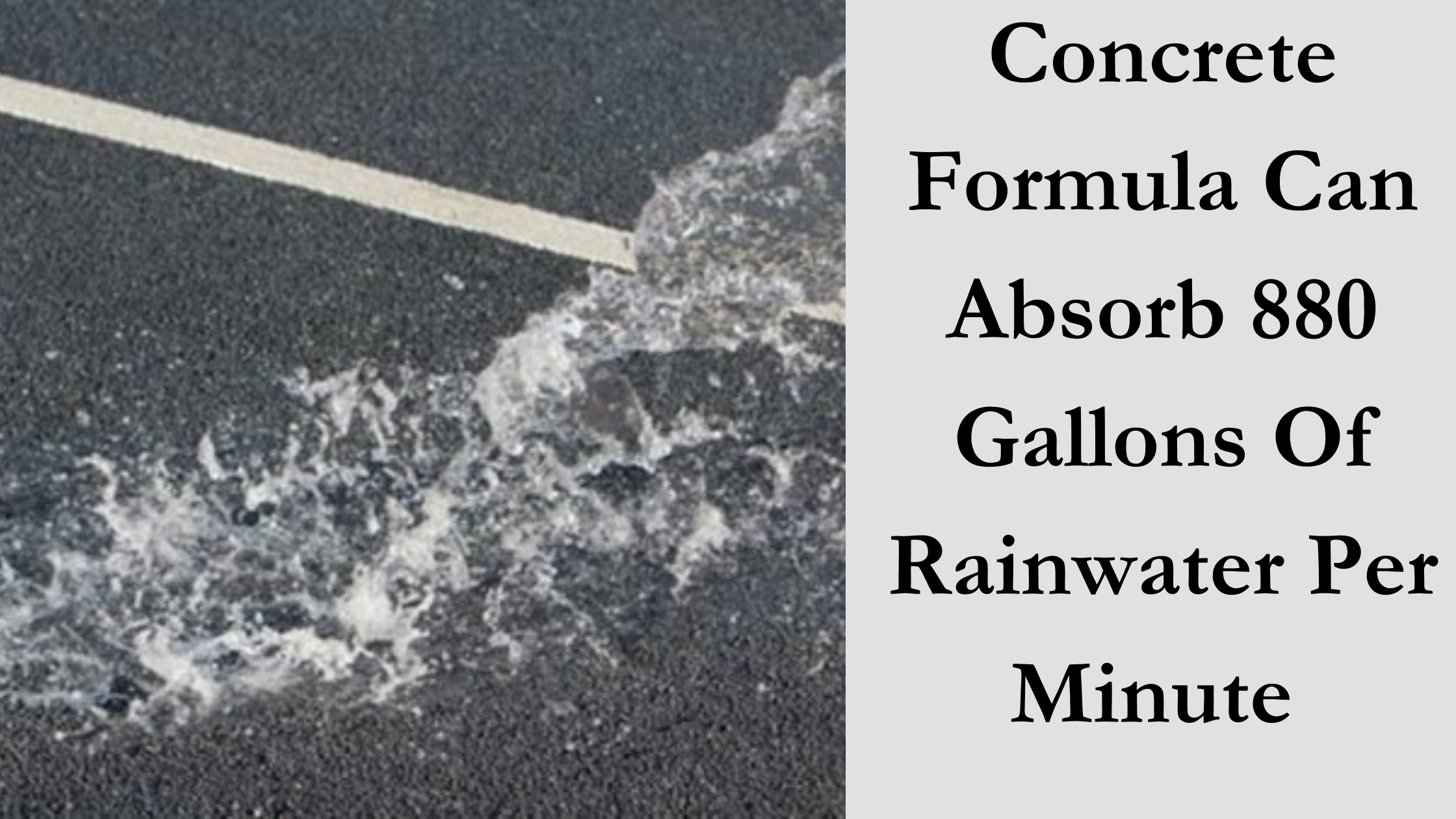A water-absorbing cement was originally created by an intellectual brigade at Tarmac, a company That provides sustainable building materials and construction solutions.
What is concrete that absorbs water?
This type of concrete is known as “Topmix permeable” because it lets rainfall pass through it like a huge sponge.
- It can require 36,000 mm of water every hour on average.
- Depending on the climate in each nation, the amount of water absorbed may differ.
- It can withstand storms that last more than a century, and even if dirt gets in the way, 95% of the water will still be absorbed.
Describe infiltration.
- Water from the earth penetrates the soil during this procedure.
- There may be regional variations in the rate of soil absorption infiltration.
- It is expressed in inches or millimeters per hour.
Rainwater Harvesting: What Is It?
- A historic Indian practice, rainwater harvesting (RWH) collects and stores rainwater for later use in residences, flats, parks, workplaces, and temples.
- This is a common practice in Rajasthan and other arid parts of the nation.
- Matakas, ahar pynes, surangas, and taankas are containers used to hold water.
- Additionally, it lessens urban floods, replenishes the nearby aquifers, and conserves water for the area that is water-scarce.
Farmers have improved the sustainability of their water supplies, restored dry borewells, built water banks in drought-stricken areas, and even constructed rivers!
In What Way Is This Absorbent Concrete Beneficial?
It may first control storms in the city, guaranteeing:
- Water should be wiped off quickly to maintain the surface tidy.
- secure parking lots
- No flooding or water buildup
Second, The Government Is Motivated To Pursue It By Several Environmental Issues, Such As:
- Urban living never stops.
- It removes hydrocarbons from unclean road water.
- It elevates and restores natural groundwater equilibrium.
- Of course, by absorbing the water, it also reduces urban heat.
Other Effective Strategies for Managing Floods:
Using rainwater sensibly and preventing river water from flooding the city is the focus of several international institutions.
1. Flood barriers ensure that water doesn’t pool in one area.
- These locations can be marked using segmented metal barriers that are lightweight.
- The US and the UK have both largely embraced this approach.
2. Reducing the speed and flow of water as it enters larger rivers by using concrete walls and flood barriers to control river water.
- These obstacles consist of fields and ditches as well as slits in embankments.
- Furthermore, trees stop the water’s flow.



